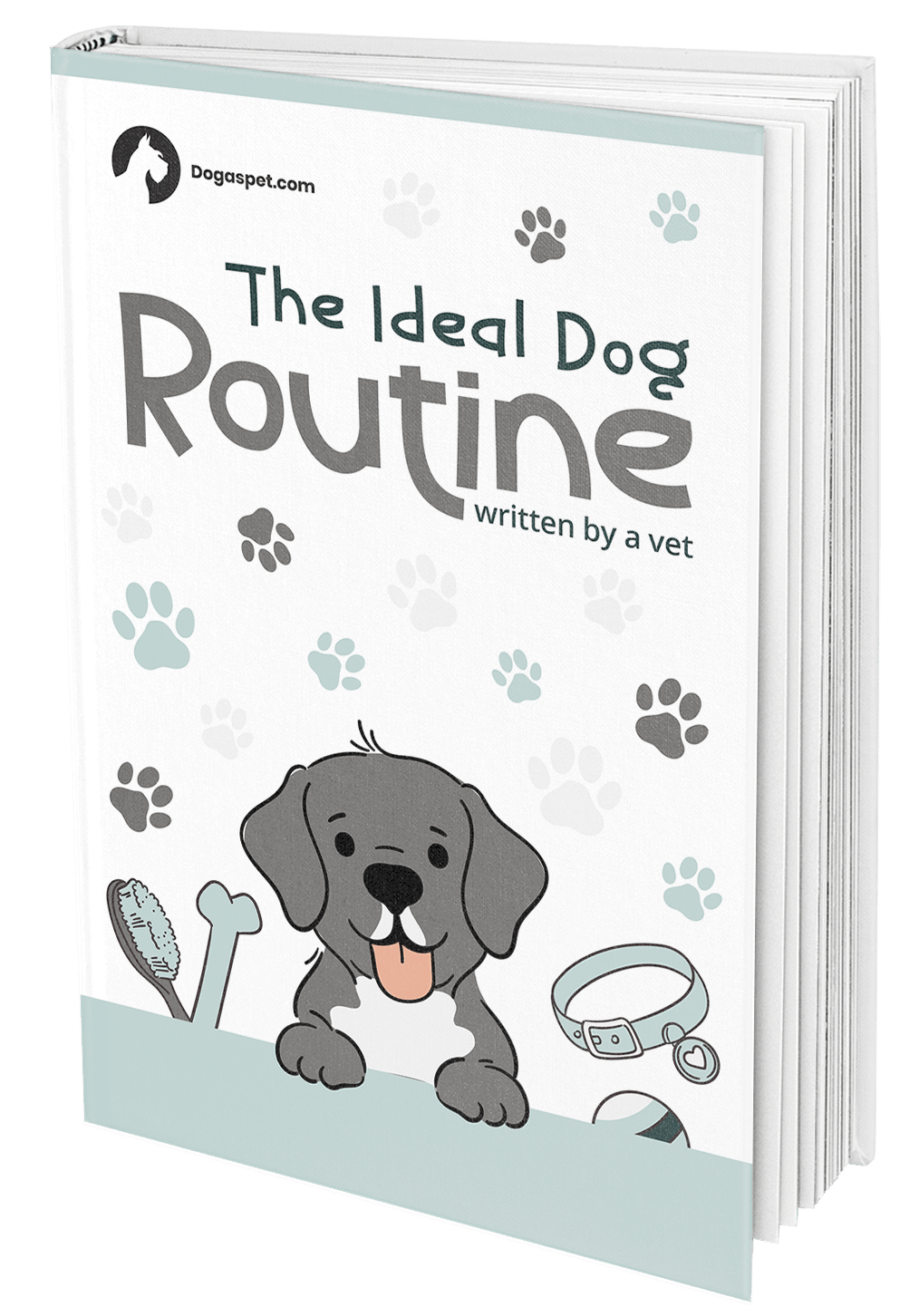
Searching for the perfect chew toy for your best friend can be challenging. What’s the difference between rawhide and beef hide anyways? Is beefhide the same as rawhide?
Here’s what you need to know about the difference between beefhide and rawhide and how to choose a safe and appropriate option for your dog.
Is Beefhide the Same as Rawhide?
Beefhide is rawhide, but rawhide isn’t always beef hide. Rawhide is a type of hide that comes from any animal processed in the leather industry, including cows, horses, and buffalo. The majority of rawhide comes from cows, but if it isn’t specified, it may have come from any animal.

What is Rawhide?
Rawhide is any untanned hide with the hair and fat removed. To make rawhide, hides are cleaned and the hide is separated into two layers. The outer layer is made into leather items like belts and shoes, while the inner layer is used to make rawhides for dogs.
The hide is put in a solution of lime and other chemicals to remove the hair and fat. It’s then put into a salt brine until it can be processed into a treat for your dog.
When it’s time for processing, hides are wrung to squeeze excess liquids from them and then cut and tied into shape before being dried for sale. As you can see, although it’s a natural product, beefhide or rawhide goes through quite a lot of processing before it gets to your dog.
What Kind of Rawhide is Best?
When it isn’t made from beef, rawhide is often made from horse, but you can also find it made from pig skin or buffalo. Since rawhide from any of these sources is still a product of the leather industry, they will have gone through the same kind of processing as beef hide made from cows, so none of them is necessarily better for your dog.
The trick is learning where the hide comes from and how it’s been processed. Unusual rawhide sources like buffalo are often more likely to have been made and processed in the US with less time spent soaking in chemicals. Therefore, if you’re looking for the best rawhide, buffalo hide may actually be better than beefhide.
Risks and Benefits of Rawhide Comparison Table
- Good for Teeth - Chewing on rawhide can clean a dog's teeth and reduce the likelihood of dental disease. Rawhide is less likely to damage a dog's teeth compared to bones and hooves.
- Dogs Love Chewing - Most dogs are highly motivated to chew on natural materials like rawhide. The way rawhide shreds and breaks down is great for cleaning between teeth and soothing sore gums in teething puppies.
- Convenient for Pet Owners - Rawhides are cheap and convenient treats that can be given to dogs anytime and anywhere. They are easy to dispose of after use, and most pet owners are comfortable with them.
- Risk of Choking - The stringy and soft texture of rawhide can break off into small pieces that can become lodged in a dog's throat, potentially causing a life-threatening emergency.
- Intestinal Blockage - Swallowing a piece of rawhide can cause an intestinal blockage, which can be fatal without intervention.
- Digestive Issues - Ingesting small pieces of rawhide can cause gastrointestinal distress and lead to symptoms such as diarrhea, vomiting, and pancreatitis.
- Risk of Contamination - Rawhide chews can be contaminated with salmonella bacteria, which can be dangerous to both dogs
- Getting Stuck in Teeth - Bits of rawhide can become lodged in between a dog's teeth, causing pain and inflammation.
Why Beefhide/Rawhide Is Good For Dogs
Assuming you are choosing the highest quality rawhide that is relatively free of contaminants and decay, what are the benefits for your dog? Rawhide is a highly debated treat for dogs because some dogs experience issues, while others have no trouble at all. Let’s consider the benefits of rawhide and beefhide to help you decide whether this is a good treat for your pup.
Beef Hide for Dogs is Good for Teeth
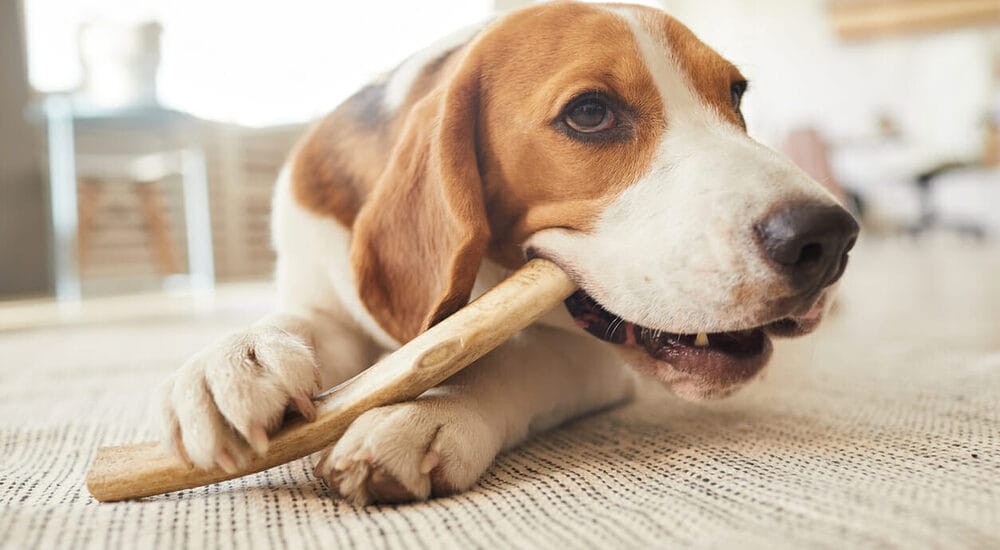
Dogs love to chew. Pet owners are always scrambling to find appropriate things for them to sink their teeth into, so they’ll leave the furniture and the kids’ legs alone. Beef hide has always been a popular option. For as long as products have been commercially available in the pet industry, rawhide has been an option, and for good reason.
Research has found the same thing that pet owners have known for many years – that chewing on a rawhide can clean a dog’s teeth and make dental disease less likely. Furthermore, bones and hooves are more likely to damage a dog’s teeth than rawhides. Not to mention that dogs enjoy chewing rawhides.
Dogs Love Chewing on Rawhide
It can be challenging for pet owners to find enough things for their dogs to safely chew on, especially on a budget. Most dogs are more highly motivated to chew on a natural material like rawhide than they are on nylon or rubber chew toys.
Furthermore, the way rawhide shreds and breaks down as dogs chew on it is great for cleaning between teeth and soothing sore gums in teething puppies. Because rawhide comes in so many different shapes and sizes, there are options available for just about any dog.
Rawhides Are Convenient for Pet Owners
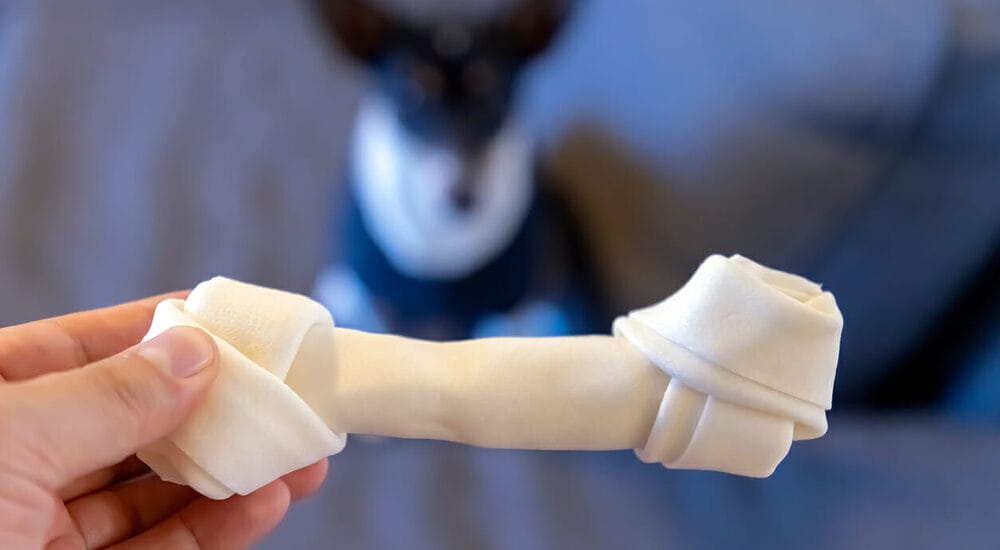
Rawhides are a cheap and convenient treat that can be given to dogs anywhere and anytime. They are affordable enough that you can throw them away once they’re worn down, which is different from food toys that require cleaning and sanitizing after each use.
Since rawhides have been in the pet industry for a long time, most pet owners are comfortable with them and know how to give them to dogs.
So, Why Is Beefhide Bad for Dogs?
With all of the benefits of rawhide and beefhide, why do people keep asking is beefhide okay for dogs? There are some very real concerns with beefhide that need your attention:
There’s a Risk of Choking
The stringy and soft texture of the rawhide as it’s chewed can break off into small pieces that can become lodged in the dog’s throat, potentially causing a life-threatening emergency.
Signs that a piece of rawhide might be lodged in your dog’s throat include drooling, panicking, pawing at the mouth, and the inability to swallow food or water. Immediate veterinary attention is necessary in this situation if you can’t get the piece out yourself.
Your Dog May Get an Intestinal Blockage
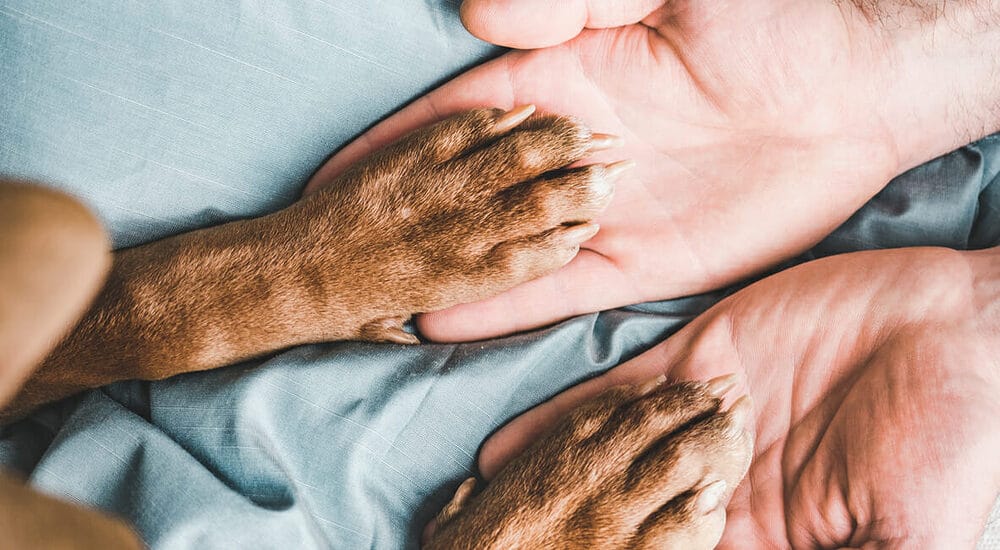
If a dog swallows a piece of rawhide, it can cause an intestinal blockage This is a severe issue which can lead to death without intervention. Since rawhide is not digestible and won’t break down in the stomach, if it becomes lodged in the dog’s intestine or stomach, surgery may be required.
Rawhide and Beefhide Isn’t Indigestible
Rawhide can result in digestive issues for dogs even if they don’t get a blockage. When dogs chew on rawhide, they ingest small pieces that can swell up in the stomach or intestine, causing gastrointestinal distress.
This can lead to symptoms such as diarrhea, vomiting, and pancreatitis. Chronically consuming small bits of rawhide can lead to long term problems if dogs are allergic to the beefhide or ingredients in the rawhide product.
There’s a Risk of Contamination
Rawhide chews can be contaminated with salmonella bacteria, which can be dangerous to both dogs and humans. Between 2008 and 2011, there were six major FDA recalls of rawhide due to salmonella. It is essential to be cautious and aware of this risk when giving your dog a rawhide chew.
Getting Stuck in Teeth
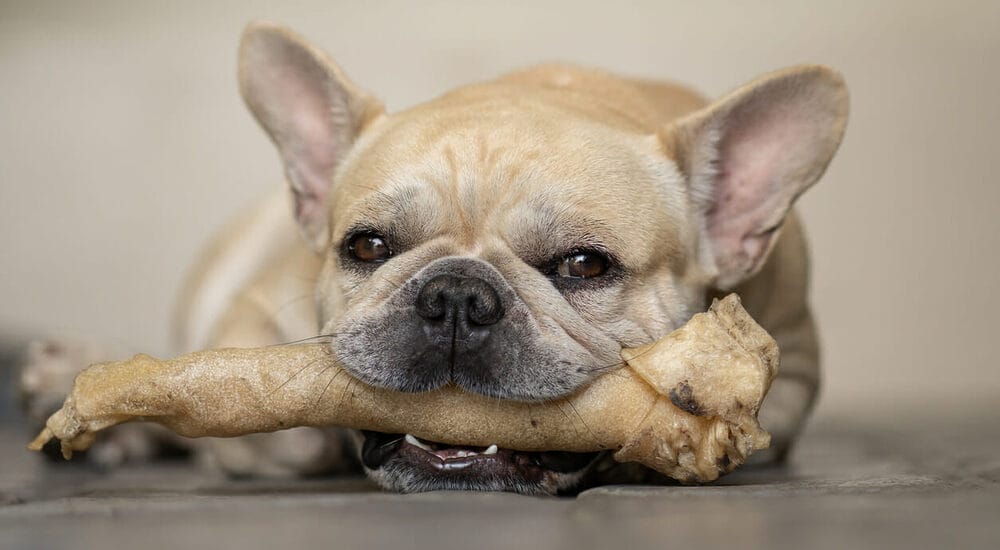
Rawhide and beefhide chews are generally good for a dog’s oral health, but they can also cause problems. As the dog chews on the hide, especially if they’re a vigorous chewer, bits of it can become lodged in between their teeth, causing pain and inflammation.
This is especially true for aggressive chewers or dogs who already have some issues with their teeth or gums. If your dog experiences dental problems caused by these chews, a visit to the vet for a thorough mouth cleaning and medication may be necessary.
How to Make Sure Beefhide or Rawhide is Good for Your Dog
Know Where Your Rawhide Comes From
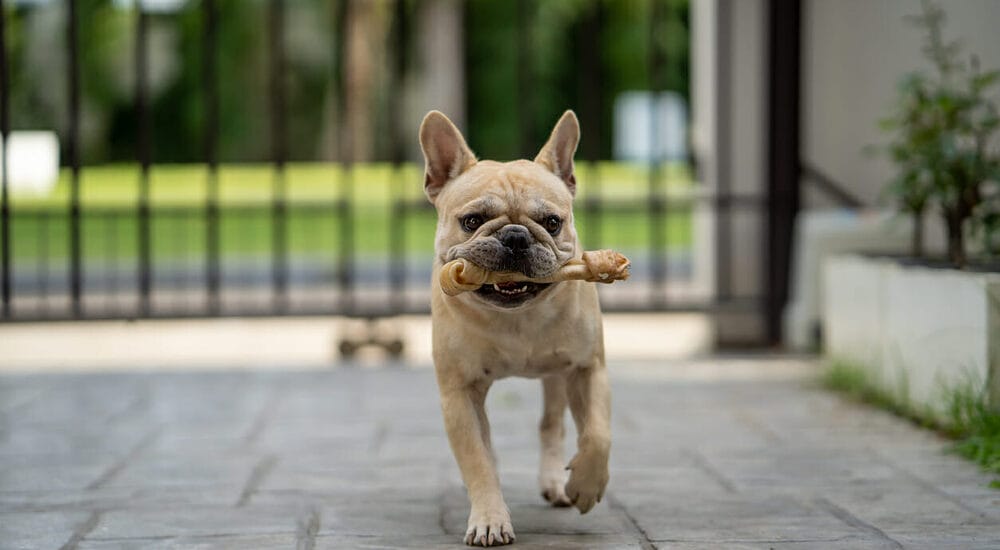
Whatever kind of rawhide you are choosing for your dog, whether it comes from beef or another source, the first step is to be careful about where it comes from. Most rawhide chews are manufactured in China, where it can take weeks to months for the brined hides to make it to the tanneries for final manufacturing.
The salt brines used to slow decay can’t prevent it, no matter how long they delay it. Rawhides made in the United States are few and far between and pricier than your average chew, but the benefits are well worth the cost.
It is best to fully rinse a rawhide in water before giving it to your dog regardless of its source. The rawhide you choose shouldn’t smell but it shouldn’t be bleached white or have no scent at all either, as this indicates excessive use of chemicals.
Know Your Dog
Think about your dog carefully and talk to your vet about whether rawhide is a good option for them. Every dog is different, and while beef hide bones for dogs of one personality or medical history may be fine, they may not be ok for another dog.
3 Questions To Ask About Your Dog
- Does your dog enthusiastically rip apart and try to swallow every toy or piece of food you give them? A rawhide may not be the best for them.
- Has your dog previously struggled with digestive issues when they ate things that were not digestible, like pieces from a nylon chew? They may have too delicate a stomach for beef hide.
- Does your dog have common allergies to food, such as chicken? Be very careful when choosing rawhide, as it is often flavored with chicken.
Be Sure That You Can Take It Away
Before offering a rawhide or any other kind of chew to your dog, make sure that you have done sufficient training to be confident that you can take the treat away. It’s a good idea to have something that you know your dog finds highly desirable on hand so you can exchange it for the hide if needed.
Dogs can become unexpectedly possessive over a high-value treat like a rawhide, and you don’t want to end up fighting with your dog over a treat that may do them harm.
Choose the Right Amount
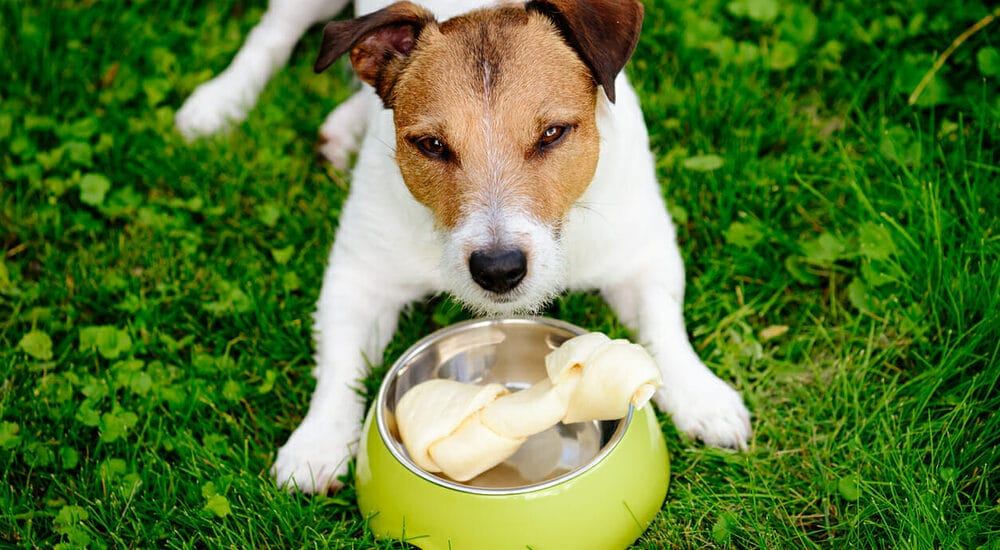
To ensure your dog’s safety while giving them rawhide chews, it is important to consult with your vet about the appropriate amount to give based on the size of your dog. An appropriate amount of beefhide for puppies is going to be a lot less than for a large, grown dog.
Err on the side of offering your dog less rawhide or beef hide at the beginning until you know how they’ll react to it.
Pick the Right Size and Type
Choose a rawhide that is considerably larger than your dog’s mouth so they won’t be able to swallow the entire thing. Your dog should be able to get part of the rawhide deep into their mouth so they can chew it thoroughly, but they shouldn’t be able to fit the entire thing in their mouth at any time.
Rawhide comes in all kinds of shapes and sizes, from simple pieces that look very much like the skin they were cut from to elaborately pressed and mixed beefhide bones and fun shapes. There are lots of options for you to try and find an option that works well for your dog.
Create a Quiet Space for Chewing
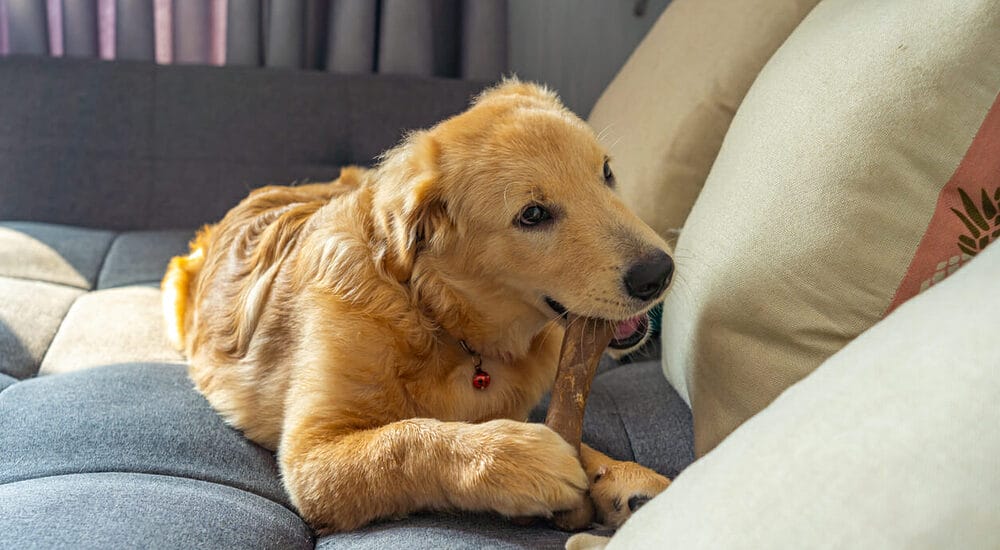
Until you know how your dog will react to consuming a rawhide, it’s important to provide a calm, comfortable environment where your dog can chew in peace. Make sure all of your other pets and kids stay well away from your dog.
It’s best that your dog be in their own room. This is an ideal time to work on crate or place training while you keep an eye on your dog as they chew.
Supervise Your Dog
Supervise your dog while they chew to prevent them from swallowing large pieces, especially at the beginning as you’re deciding whether beefhide pieces or bones are right for your dog.
If your dog is aggressively chewing at the hide, ripping off large pieces, or trying to swallow the entire thing, take it away promptly. Try offering different types of rawhide to see what works better for your dog.
Take the chew away once it becomes small enough to swallow whole. Also take the chew away when it becomes soft or dirty, or has been actively chewed on for a few days.
Types of Rawhide and Beef Hide
Whatever kind of animal rawhide is made of, you can typically find it in a number of different forms. Here are a couple of the options to keep your eye out for as you’re looking for the ideal rawhide treat for your dog.
3 Types Of Rawhide And Beef Hide
- Strips: These are simple pieces of dried skin that often work well for small dogs or light chewers.
- Braids: Slightly sturdier than strips, braids provide a dynamic chewing experience that many dogs enjoy. They come in different sizes and thicknesses to fit the needs of just about any size dog.
- Bones: Beefhide bones may be pressed, or they may be wrapped into a bone shape. They are typically one of denser and heavier options you can choose, making them a good option for heavier chewers.
Alternatives to Rawhide and Beefhide
Substitute For Rawhide / Beefhide
- Bully Sticks: Dried bull pizzles that come in various sizes and shapes, have no choking hazard, and are digestible. However, they can be high in calories, have bacteria issues like rawhide, and are messy and smelly. When comparing beef pizzle vs rawhide, the primary difference is that bully sticks are digestible.
- Antlers: Antlers from elk or deer, won't splinter, have no odor, and help clean teeth. Look for naturally-shed ones for the best texture for dogs teeth.
- Kongs: These rubber toys can be filled with treats and spread to keep dogs occupied for hours. They are indestructible and have extremely low risk of causing indigestion or choking.
- Yak/Himalayan Chews: Made from yak's milk these hard, thick, all-natural pieces of cheese rarely cause indigestion or choking. To avoid a choking hazard as your dog finished the chew, take the last bit away and pop it in the microwave for a tasy cheese puff treat.
- Frozen Peanut Butter, Fruit, Broth Cubes, Etc: This DIY option that's great for summer can be done with just about anything your dog enjoys. Carrots, apples, cucumber, and strawberries are also great options. Whether you blend them, freeze them whole, or freeze them into Kong toys, these are great healthy chews.
- Marrow Bones: Want to really give your dog a treat? These thick bones filled with marrow are available at the butcher or meat counter. They’re fatty but full of essential nutrients and minerals. They should be given with supervision as they are messy.
- Pegetables: These dental dog chews are made from vegetables such as peas, sweet potatoes, and carrots. They are often free from corn, grain, and gluten and can freshen your dog's breath while cleaning their teeth. They may be made into shapes that resemble rawhide.
Conclusion – Beefdhide Is Rawhide
What is the difference between beefhide and rawhide? Not much, when it comes down to it. All types of rawhide, including beefhide, can be a great chew toy for the right dog. However, know your dog, supervise carefully, and source your rawhide or beefhide to be sure you’re giving your dog a healthy treat.

